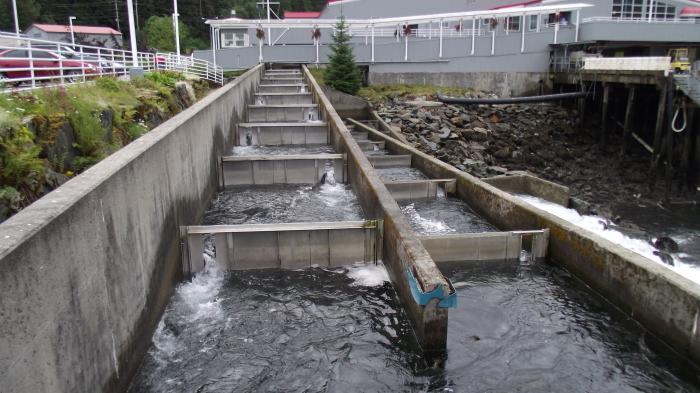Salmon that begin their lives in Alaska hatcheries often save the day for thousands of fishermen when returns of wild stocks are a bust. This year was a prime example, when pinks and chums that originated in hatcheries made up for record shortfalls for fishing towns in the Gulf of Alaska.
“This year Kodiak hatchery fish added more than $6 million for fishermen, and also for sport fish, subsistence and personal use fisheries,” said Tina Fairbanks, director of the Kodiak Regional Aquaculture Association, in testimony to the Kodiak Island Borough after one of the Island’s poorest salmon seasons.
But Alaska’s hatchery program, which has operated since the early 1970s, is under assault by critics who claim the fish are jeopardizing survival of wild stocks.
A Kenai sportfishing group said in statements to the state Board of Fisheries that “massive releases of pinks from Prince William Sound hatcheries threaten wild sockeye and Chinook salmon” bound for their region. An individual from Fairbanks is calling for a decreased cap on how many pink salmon some hatcheries are allowed to release to the ocean each year.
Currently, 29 salmon hatcheries operate in Alaska, producing primarily chums and pinks. Twenty five are operated by private nonprofit corporations funded by the sale of a portion of the salmon returns. Two sport fish hatcheries are operated by the state at Fairbanks and Anchorage, one research hatchery is run by NMFS, and one is operated by the Metlakatla Indian Community.
Alaska hatcheries don’t grow fish to adulthood, like fish farms. They can be likened more to salmon maternity wards, where fertilized eggs from local stocks are incubated until they become big enough to be let out into the world.
Pink and chum salmon can be released from fresh to salt water soon after hatching. Chinook, sockeye and coho salmon fry usually spend a year or more in fresh water before they can tolerate a transition to the sea. The fish imprint on their release sites and return as adults.
Prince William Sound produces most of the state’s hatchery fish, followed by Southeast, Kodiak and Cook Inlet. Combined, they released a total of roughly 1.6 billion juvenile salmon in 2017.
In terms of catch, a hatchery harvest last year of 47 million fish accounted for 21 percent of the statewide salmon harvest, the lowest percentage since 1995, and due largely to the third largest wild salmon catch in Alaska history.
The state Board of Fisheries will consider proposals by hatchery critics at a meeting on October 15-16 in Anchorage. An open public meeting is scheduled for the afternoon of Oct. 16.







